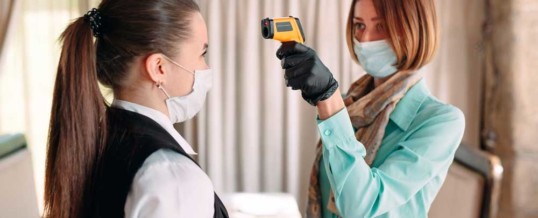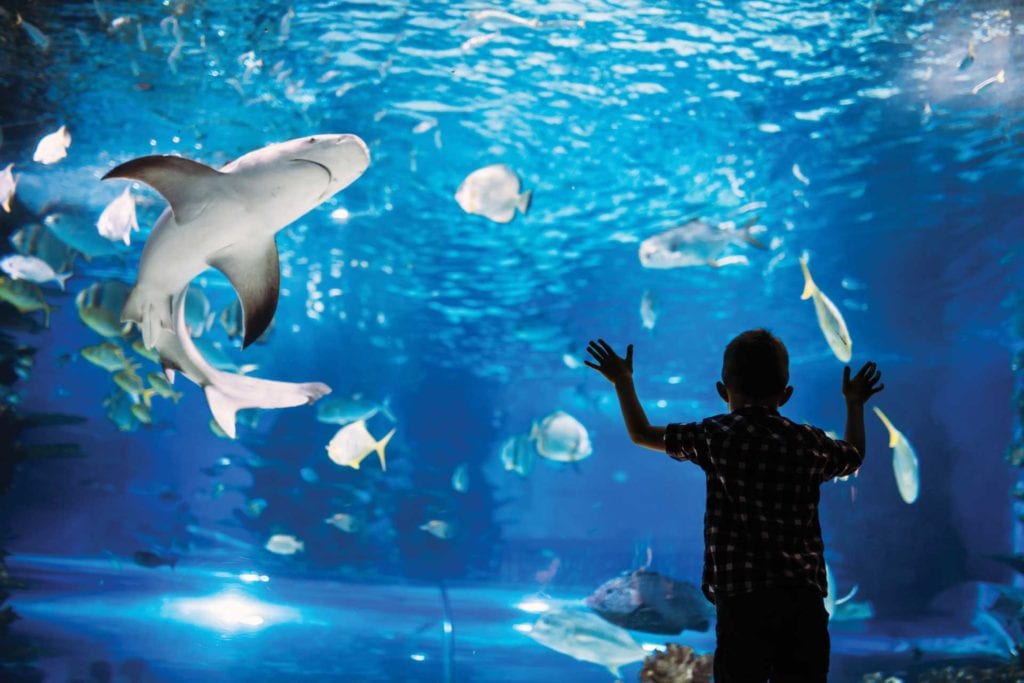
How do you create great guest service and a special experience when you have to keep 6 feet of distance? Most places that pride themselves on good guest service go out of their way to help and interact with guests on a personal level, but with social distancing now being the norm, many places are having to make quick adjustments.
However, they still need to find the way to be able to deliver that same level of service, or at least the feeling that goes with it.
Social Distancing Versus Physical/Spatial Distancing
With the unexpected global pandemic we all know as COVID-19, terms like “social distancing”, “physical distancing”, and “quarantine” have become a popular part of our vocabulary.
According to the CDC, social distancing is the practice of limiting face-to-face contact with those outside your household in order to reduce the risk of spreading coronavirus. It is recommended to stay six feet away from anyone outside your home.
However, a better term that is beginning to replace “social distancing” is “physical distancing” or “spatial distancing”. This switch has the intention of communicating to people that just because you have to physically distance from friends, family, and coworkers, does not mean you should be socially distancing from them.
In fact, from a psychological perspective, socially isolating can be unhealthy and detrimental as it is very much against our human nature of craving connection with others.
Limiting human connection can lead to depression, anxiety, and even domestic violence.
The distinction was made during a news briefing back in March when officials announced that keeping physically distanced was essential to reduce the spread of COVID-19, but “it does not mean that socially we have to disconnect from our loved ones, from our family.”
WHO epidemiologist, Maria Van Kerkhove, commented “We’re changing to say physical distance and that’s on purpose because we want people to still remain connected.”
Physically Distancing Doesn’t Mean Socially Distancing
As a leader of your staff, it is imperative to remember to promote physical distancing while maintaining social closeness. This reminds people that although we have to physically maintain space from others, we do not have to isolate and deprive ourselves of intimate connection.
Psychologist Roy Baumeister refers to this strong desire for connection as “the need to belong.” As humans, we are always looking for ways to identify with and relate to other groups in order to give us a sense of belonging. When we isolate ourselves, we eliminate the chance to belong.
“Just as with the biological systems of the body, the biological system of a tightly-knit human community stays healthy and productive only when people are interacting with each other in a relatively steady fashion,” said psychologist Michael J. Spivey.
Thanks to technology and creative solutions, there are countless ways to stay connected in our personal and professional lives.
How to Keep Your Staff and Guests Safe
New research is finding that the most effective way to decrease the chance of spreading COVID-19 is through the combination of physical and temporal distancing. Temporal distancing means that we are separating in time. Many of us have practiced temporal distancing before COVID-19 without even realizing it.
For example, doing things like taking lunch early to avoid crowds and catching a later bus or leaving work after hours to avoid traffic are common ways we practice temporal distancing.
The below diagram, courtesy of The Conversation, illustrates how the rate of infection is decreased when spatial distancing and temporal distancing are combined, creating a powerful solution to the current spread of the pandemic until a vaccine is formulated.
Beth Daley, editor and general manager of The Conversation, gives the example “Imagine a randomly spread population of 1,000 people, one of whom is infected. With free movement, everyone becomes infected within a relatively short time. If we reduce movement by 80% (spatial distancing; dashed curve), the rate of infection is slowed. If we halve the time people spend exposed to one another (temporal distancing; dotted curve), the rate of infection also slows, but not as much. But if we combine both of these measures (red curve), the effect is strongest of all.”
By adopting physical and temporal distancing practices you can mitigate the risk of staff and guests contracting illness.

A New Way of Engaging- Guest Service 2.0
Despite COVID-19, time keeps moving forward and our lives cannot be put on pause forever. As we begin to reintegrate back into the world and reestablish our businesses it is important to take necessary precautions and create a foundation for employees and guests alike that is safe and supportive.
How to Maintain Social Interaction
Encouraging staff to stay socially connected via technology is necessary. “Technology, right now, has advanced so greatly that we can keep connected in many ways without actually physically being in the same room or physically being in the same space with people,” said Maria Van Kerkhove.
There are many ways to connect via texting, emailing, calling, and video chatting. Many employers are taking action by hosting regular virtual happy hours, mental health check-ins, and are engaging employees through fun virtual games, such as scavenger hunts. These activities boost employee morale and create an open dialogue about how they are adapting to the new working environment.
As employees do begin to come back into their physical working environment, it is highly encouraged to practice physical and temporal distancing. Limit the number of employees and guests who can be in the space at the same time. Creating a staggered schedule for staff to follow over the course of a seven-day roster can help aid in the correct forms of distancing.
Businesses are also adjusting their hours to fit new staggered schedules and accommodate those who are still working from home. It is also recommended to create different lunch and break times for employees and possibly even different start and finish times in order to decrease physical contact.
Keeping employees in specific teams rather than continuously mixing them up is also an effective strategy as this will reduce exposure to new germs. Masks should be worn in the physical workspace by staff and guests and providing hand sanitizer to guests, when possible, is important.
As you reopen you may also want to consider having designated hours for populations that are at higher risk, such as the elderly. We have seen this tactic proving to be effective in grocery stores.
To support your distancing efforts, make sure staff is always following strict hygiene standards. Placing signs in the workplace as reminders can be very helpful so that safety stays at the forefront of the minds of your employees.
More tips can be found in the COVID-19 employer response guide.
The Words We Use Matter More Than We Think
It is important to understand the difference in language when referring to social distancing versus physical distancing as this can impact staff and guests in different ways. As a leader, replacing the term “social distancing” with “physical distancing” or “spatial distancing” is crucial.
Martin W. Bauer, a professor of social psychology and research methodology at London School of Economics, comments on the use of the term “social distancing”. He says, “It occurred to me from the beginning that this was an unfortunate choice of language to talk about ‘social distance’, when actually what was meant was ‘physical distance.'”
While it may seem like a subtle change in how we communicate about COVID-19 and the necessary precautions we must continue to take, choosing our words carefully has never been so important when it comes to the well-being of humankind.
“Social distancing makes it sound like people should stop communicating with one another, while instead we should be preserving as much community as we can even while we keep our physical distance from one another,” said Jeremy Freese, a professor of sociology at Stanford University.
Freese also added that while we need to protect our physical health and well-being through physical distancing, our mental well-being is just as important and this will suffer if we are focused on social distancing.
How we communicate our message can have a significant impact. Freese said that as a travel executive, it is important to understand how to encourage your staff to continue engaging socially, providing excellent guest service, and physically distancing to reduce risk.
Keep Employees Productive and Having Fun
Help your employees to return back to a state of normalcy by having them engage in productive activities.
People all over the world have been finding creative ways to connect and make the most of the situation. For example, in Italy, neighborhoods took part in sing-alongs, which helped boost morale and in Iran, people have been connecting through music by playing the same songs at 7 p.m. through the use of social media groups along with participating in dance challenges together.
These are fun examples of how you can keep your staff engaged and feeling connected despite the physical distance.
Safe Practices to Follow and Reinforce
When employees are not at work it is also important to encourage that they take part in the following practices in order to reduce the spread of COVID-19:
- Stay home as often as possible
- Offer that they can choose to work from home when appropriate
- Use technology to connect with loved ones rather than face-to-face interaction
- Limit the number of visitors in their homes
- Avoid large gatherings
- Avoid public transport
By practicing the mentioned strategies and encouraging your staff to do the same you can create a safe environment for employees and guests to enjoy.
Being aware of physical and temporal distancing and practicing normal hygiene will make the transition back into operating your business and interacting with guests and staff much easier.
It may take time for everyone to adjust to a new way of doing business and providing services, but by getting creative and encouraging connection in fun, new ways the future can look a lot brighter.
Many service-oriented businesses in tourism and hospitality will have to revisit their approach as a company and potentially even their company culture to embrace a new normal.
Physical distance with a smile is going to be more important than ever moving forward. Want to learn more about how to properly prepare your staff for operating and providing the same caliber service in these uncertain times?
IBCCES has worked with experts across different fields to create training that looks both at the aspects of avoiding the spread of disease as well as delivering the best quality of guest services possible.
Learn More About Guest Experience 2.0 Training
JUL